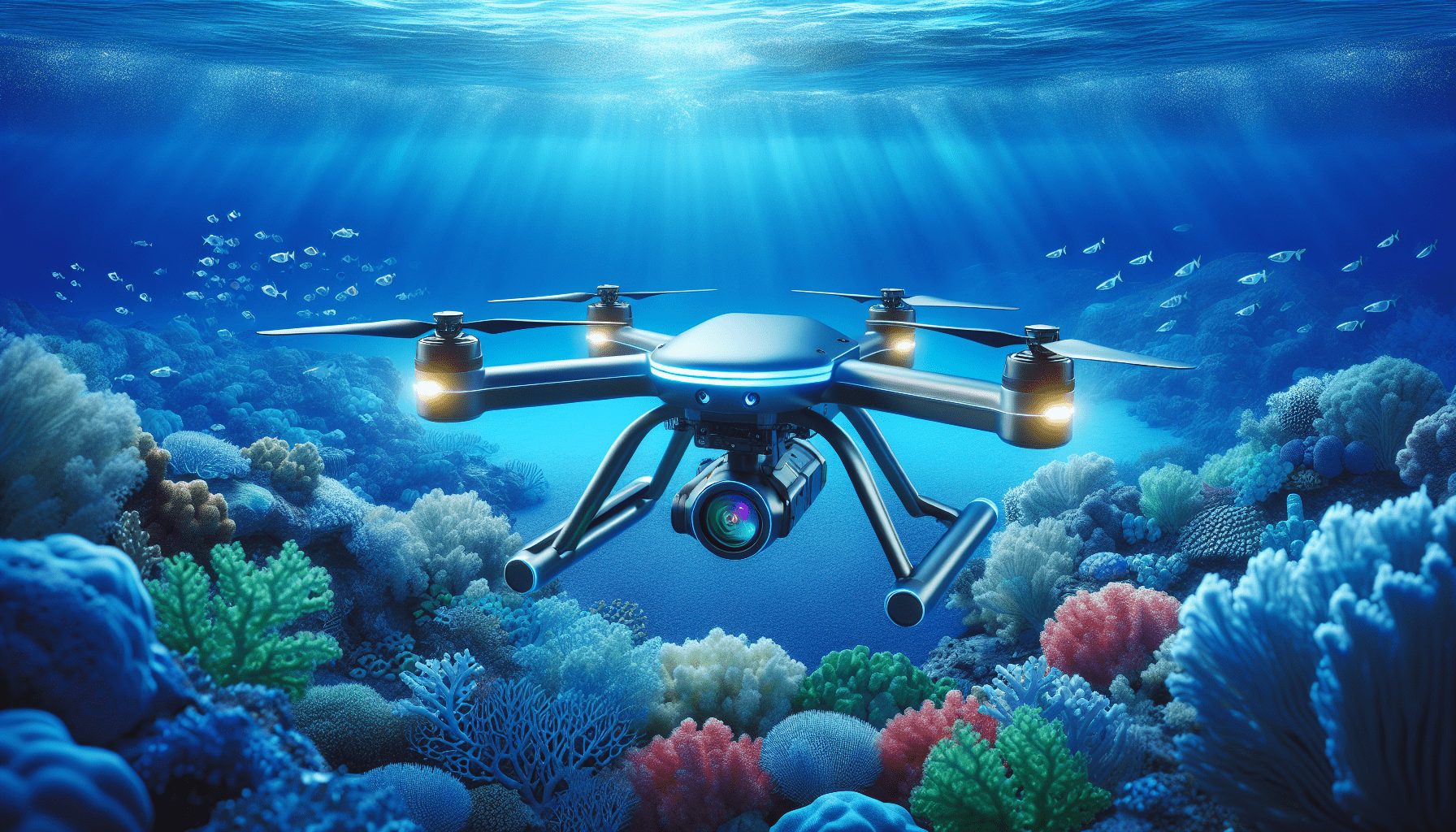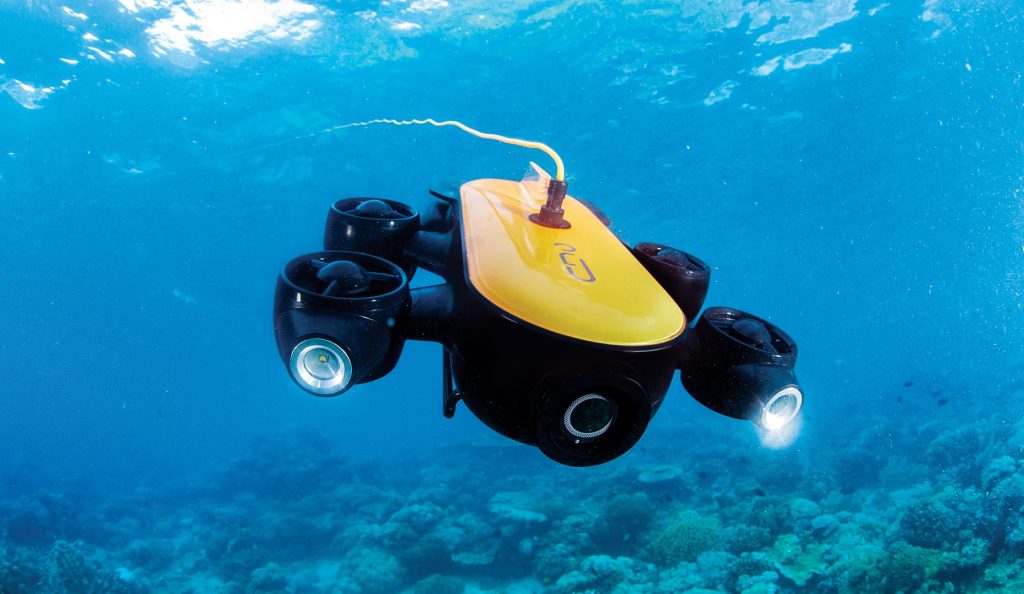Physical Address
304 North Cardinal St.
Dorchester Center, MA 02124
Physical Address
304 North Cardinal St.
Dorchester Center, MA 02124


This post may contain affiliate links. As an Amazon Associate, we may earn commissions from qualifying purchases.
Have you ever wondered what underwater drones are? In today’s technology-driven world, there’s a significant surge in the development and use of drones, not just in the sky but also underwater. These fascinating pieces of equipment are revolutionizing fields such as marine research, underwater filmmaking, and even commercial applications like inspection of underwater structures.
Underwater drones, sometimes referred to as Unmanned Underwater Vehicles (UUVs), are submersible devices used to explore and observe underwater environments. They can be remotely controlled or operate autonomously and are equipped with various sensors and cameras. These drones allow you to explore the depths of the ocean, gather data, and perform tasks that would be dangerous or difficult for humans.
The concept of underwater exploration dates back centuries, but it wasn’t until the 20th century that technology caught up with human curiosity. The development of the first remotely operated vehicles (ROVs) in the 1950s laid the foundation for modern underwater drones. Initially, these vehicles were used primarily for military purposes, but their applications quickly expanded to include underwater research and commercial industries.
There are two main types of underwater drones: Remotely Operated Vehicles (ROVs) and Autonomous Underwater Vehicles (AUVs). Each type has its unique features and applications.
| Type | Description | Applications |
|---|---|---|
| ROVs | Tethered to a surface vessel, operated remotely via a cable. | Marine research, inspections, underwater repairs, filming. |
| AUVs | Operates autonomously, not tethered to a vessel. | Mapping, mining exploration, environmental monitoring. |
Underwater drones operate using various propulsion systems, typically electric motors connected to propellers. They are equipped with navigation systems, cameras, lights, and various sensors to perform specific tasks. The data collected can be transmitted back to the surface in real-time or stored for later analysis, depending on the type of drone and the mission requirements.
Underwater drones have a wide range of applications. These range from academic research and environmental monitoring to commercial and industrial uses. Here’s an in-depth look at how these devices are utilized in different fields.
Marine biologists and oceanographers use underwater drones to explore marine life and ecosystems. By deploying these devices, you can gather data on species distribution, behavior, and environmental conditions. This information is crucial for understanding marine biodiversity and addressing issues like climate change and habitat destruction.
Underwater drones play a vital role in monitoring the health of our oceans. They help track pollution levels, study the effects of climate change, and monitor coral reefs. The data gathered is essential for developing conservation strategies and ensuring the sustainability of marine resources.
In the oil and gas industry, underwater drones are used for pipeline inspections, maintenance, and repairs. The ability to operate in harsh underwater environments makes them invaluable for ensuring the integrity of underwater infrastructure. Using these drones reduces the need for human divers, thus increasing safety and efficiency.
Capturing underwater scenes for documentaries, movies, and other media productions is another exciting application. Underwater drones equipped with high-definition cameras and lighting systems provide stunning visuals, enabling filmmakers to document marine life and underwater landscapes in unprecedented detail.
In search and rescue missions, underwater drones help locate and recover objects or bodies in challenging environments. Their ability to navigate through debris and tight spaces makes them instrumental in these critical operations. Using underwater drones can significantly reduce the time and effort required for such missions.

When considering the purchase or use of an underwater drone, it’s important to understand the key features that make them effective tools for underwater exploration and tasks.
One of the most important features is the quality of the camera. High-definition cameras, sometimes with 4K resolution or higher, provide clear and detailed images and videos. This is crucial for tasks like inspections and underwater filming. Look for drones with good low-light performance and wide field of view.
Battery life determines how long a drone can operate underwater before needing to resurface for a recharge. Depending on the model, battery life can range from a couple of hours to several days. Longer battery life is particularly important for extensive research missions or industrial applications.
The depth rating indicates the maximum depth at which the drone can operate effectively. For example, some drones are rated for shallow waters up to 100 meters, while others can dive to depths of 1,000 meters or more. The depth rating you need will depend on your specific application.
The propulsion system affects the drone’s maneuverability and speed. Most underwater drones use electric thrusters that provide smooth and precise movements. Advanced drones may feature multiple thrusters for greater control and stability in challenging underwater conditions.
Underwater drones can be equipped with various sensors and accessories, such as sonars, hydrophones, and robotic arms. These additions enhance the drone’s capabilities, making it possible to perform a wider range of tasks. When choosing a drone, consider the sensors and accessories that are essential for your specific needs.
While underwater drones offer numerous benefits, they also come with certain challenges. It’s important to weigh these factors when considering the use of underwater drones in your projects.
Underwater drones reduce the need for human divers to enter potentially dangerous environments, significantly enhancing safety. They can operate in hazardous conditions, such as deep waters, confined spaces, and areas with strong currents or high pollution levels.
Using drones can be more cost-effective than traditional methods of underwater exploration and inspection. They lower the need for extensive manpower and expensive equipment, making them an economical option for many applications.
These devices provide access to remote and otherwise inaccessible areas. As a result, you can explore and study parts of the ocean that were previously out of reach, contributing to a greater understanding of marine environments.
One of the significant limitations is the battery life of underwater drones. While technology is advancing, current battery capabilities may still limit the duration of missions. Planning and managing battery life is crucial for the success of underwater operations.
The presence of drones in underwater environments can disturb marine life, potentially altering natural behaviors and ecosystems. Minimizing this impact is essential to ensure that the drones do not harm the very environments they are meant to explore and protect.
Operating underwater drones requires a certain level of technical expertise. These devices can be complex to deploy and navigate, and technical malfunctions can arise, requiring prompt troubleshooting and repair.

The field of underwater drones is rapidly evolving, driven by technological advancements and growing interest in marine exploration. Here are some trends and developments to look forward to in the coming years.
Artificial Intelligence (AI) is set to play a significant role in the future of underwater drones. AI-powered drones can analyze data in real-time, make autonomous decisions, and adapt to changing conditions. This will enhance their efficiency and effectiveness in various applications.
Future underwater drones will likely have improved durability, allowing them to withstand harsher environments and greater depths. Advancements in materials and engineering will enable these drones to operate in extreme conditions without compromising performance.
Integration with technologies such as augmented reality (AR) and virtual reality (VR) will open new possibilities for underwater drones. For instance, you might be able to control drones using immersive VR interfaces or get real-time data overlay through AR for more intuitive navigation and analysis.
As technology advances and costs decrease, underwater drones will become more accessible to a wider range of users. This democratization will spur innovation and expand the use of drones in areas like personal exploration, education, and citizen science.
Selecting the right underwater drone depends on several factors, including your specific needs, budget, and technical expertise. Here’s a guide to help you make an informed decision.
First, clearly define what you aim to achieve with the underwater drone. Are you conducting scientific research, performing industrial inspections, or capturing underwater footage? Different objectives require different features and capabilities.
Underwater drones come in a wide range of prices, from affordable consumer models to high-end professional equipment. Setting a budget will help narrow down your choices and ensure you find a drone that meets your needs without overspending.
Consider the key features discussed earlier, such as camera quality, battery life, depth rating, and sensor compatibility. Make a list of must-have features based on your objectives and research available models that fit your criteria.
Research various models and read reviews from other users to get a sense of their performance and reliability. User reviews can provide valuable insights into the pros and cons of different drones and help you make a well-informed decision.
If possible, test a few models before making your final decision. This hands-on experience will give you a better feel for the drone’s capabilities and ease of use. Many suppliers offer demo sessions or rental options, which can be a great opportunity to try out various models.

Underwater drones are transforming the ways we explore, study, and interact with the marine environment. They offer unparalleled access to the underwater world, opening up new possibilities for research, conservation, and commercial applications. By understanding the types, features, advantages, and challenges of these devices, you can make informed decisions and fully leverage their potential.
Whether you’re a marine scientist, an industrial professional, or an enthusiast looking to capture the beauty of the underwater world, there’s an underwater drone to meet your needs. As technology continues to advance, the future of underwater exploration looks brighter than ever, promising even greater discoveries and innovations in the years to come.